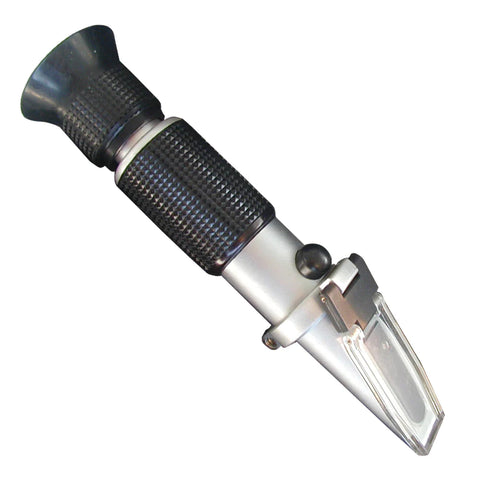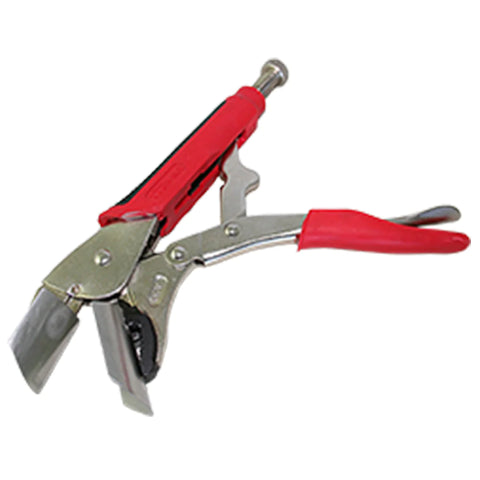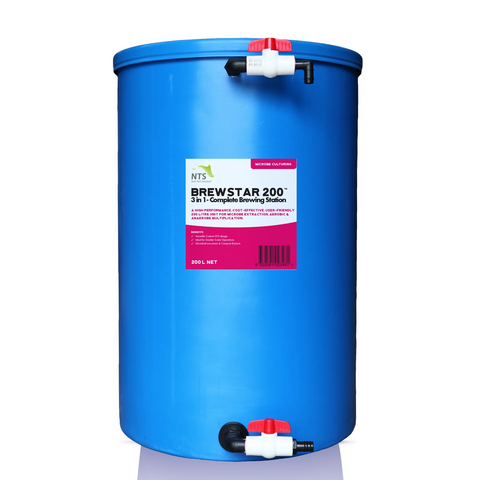
ProductDrop
A single tool that can be utilised to predict yield, quality, pest and disease pressure and stress resistance.
The refractometer is an indispensable tool for Nutrition Farming®. This simple, robust instrument can utilise just a couple of drops of sap or juice to provide valuable data for crop management. It measures brix levels (total dissolved solids) which give an indication of plant sugars, minerals and vitamin content. The link between high brix levels and inherent pest and disease resistance has been conclusively established. Good brix levels also ensure good taste, longer shelf-life and better yields.
Product Benefits
- The refractometer measures brix from 0 – 32°Bx.
- Pocket-sized and lightweight.
- Accurate to within 0.2%.
- The refractometer comes in a high-density plastic case lined with contoured foam.
MODE OF ACTION
The solids bend the light as it passes through the sample that is placed on the viewing plate. The amount of bend or degree of rotation due to the sample relates to the reading on the scale seen through the eyepiece.
CALIBRATION
1.Rinse the glass surface and plastic cover flap with distilled or deionised water and wipe dry.
2.Place a few drops of distilled or deionised water on the glass surface and lower the plastic flap to flatten the water sample evenly over the viewing glass.
3.Look through the eyepiece and rotate the eyepiece to focus the viewing scale.
4.A horizontal line will be visible and should intersect with zero on the viewing scale.
5.If the line passes through the zero, then the unit is measuring zero and is calibrated and ready for use.
6.If the line does not run through the zero, then the plastic cover on the tuning screw should be removed (located on the top of the unit) and the adjusting screw turned either clockwise or anticlockwise to either lift or lower the horizontal line as required using the provided screwdriver.
EXTRA PACKAGING INFO
The refractometer comes in a high-density plastic case lined with contoured foam. Inside the case is a plastic transfer pipette and screwdriver for use when calibrating the instrument.
- Always measure brix at the same time of day, as readings will differ. For example, at midday, plant sap tends to be concentrated (due to evaporation) and brix readings will generally read higher.
- Brix readings will fluctuate after applications of fertilisers, chemicals and irrigation.
- Ideally a historical record should be developed over time by each user to help determine possible environmental influences, acceptable brix fluctuations and ideal upper levels in their particular situation. This also applies to those determining whether a fruit or vegetable is tasty.
- Generally, brix readings will drop with low atmospheric pressure (eg. the onset of a storm).
- Relying on published brix readings as guidelines can be problematic as often it is not stated whether the readings are derived from the plant sap or fruit juice (fruit juice readings tend to be much higher).
- Store the unit in its case to prevent dust entering the focal tube.
- This tool should never be dropped and should always be stored within the shock absorbent foam case when not in use.
- Ensure the unit is cleaned and dried between samples and after use.
- Brix readings before and after a fertiliser application can help determine the suitability of different inputs, eg. if the brix rises (after 1 – 24 hours after application) then it can be considered suitable, if it stays the same or reduces, it would be considered not suitable at that time.
- It has been widely assumed that calcium and phosphate are the key elements determining brix levels. However, recent research suggests that potassium can also play an important role.
We Also Recommend


